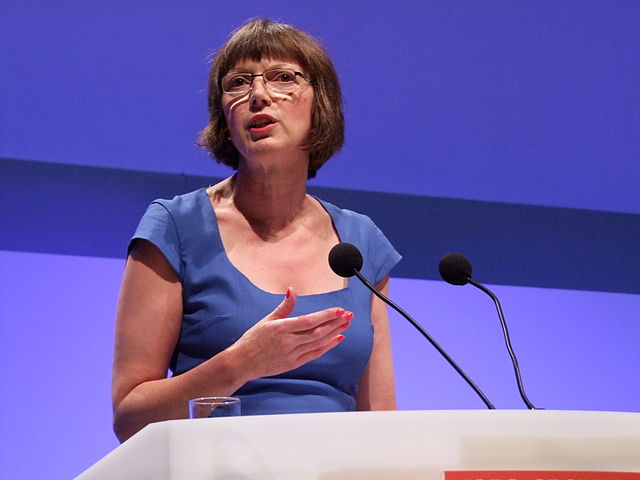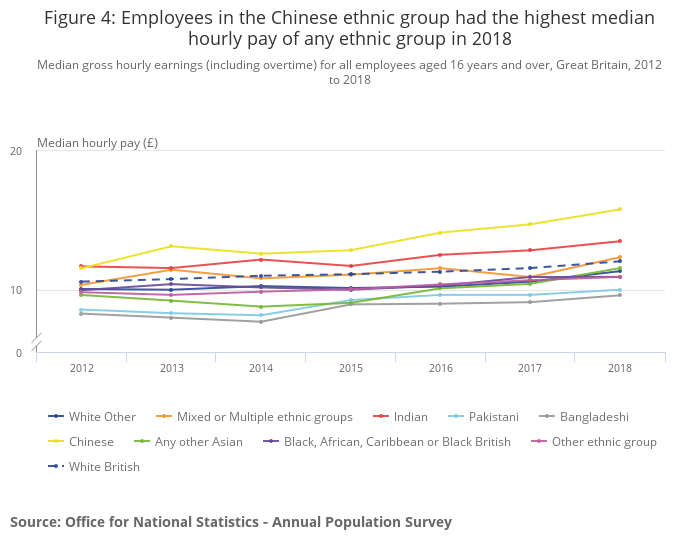Employees of Chinese and Indian descent received the highest median wage in comparison to other ethnicities, according to the results of the first ethnicity pay gap report

Results from the first ever ethnicity pay gap report show that employees from Bangladesh and Pakistan are on average worse off than those from other ethnic backgrounds.
The Office for National Statistics (ONS) figures revealed the median hourly wage for a Bangladeshi worker was £9.60 and £10 for a Pakistani employee, compared to the average of £12.03 for a white British worker.
Employees of Chinese and Indian ethnicity received the highest average wage in 2018, at £15.75 and £13.47 respectively – and have been consistently earning higher than other ethnicities since 2012.
Asian employees from outside of Indian, Chinese, Pakistani and Bangladeshi descent, were the only group to see their median hourly wage decrease between 2017 and 2018, while black African, Caribbean or black British workers’ hourly wage increased by only 1p to £10.92 – 9.2% less than their white British colleagues.
UK trade union body, the Trades Union Congress (TUC), called on employers to improve racial equality and diversity within their organisations, and report their progress.

TUC general secretary Frances O’Grady said: “The harsh reality is that even today, race still plays a real role in determining pay.
“TUC research has shown that far too many black and minority ethnic workers are stuck in insecure and temporary work, which not only has a huge impact on their life chances but also widens the pay gap.
“This problem isn’t simply going to disappear over time. Ministers must take bold action to confront inequality and racism in the labour market.
“The obvious first step is to introduce mandatory ethnicity pay gap reporting without delay.”
Why was the ethnicity pay gap report introduced?
The UK government first set out to assess the barriers that ethnic minority groups faced in the workplace in 2016.
A 2017 report, titled Race in the Workplace, estimated that greater equality between all ethnic groups in the workplace could add an additional £24bn to the UK’s economy per year.

Professor Binna Kandola, author of the book Racism at Work: The Danger of Indifference and senior partner at workplace psychology consultancy Pearn Kandola, said: “In the UK workforce, there exists a racial hierarchy, and while some groups do well in these analyses, other groups always do worst.
“The average gap is relatively small, but black people consistently earn less. It’s important that the experience of different minority groups is examined, as this enables us to identify the most problematic areas.
“There is also a tendency for some people to suggest that because some groups are earning more, those who earn less should get their act together and stop complaining about racism.
“Sometimes referred to as the ‘bootstrap model’ – as people often say ‘they should pull themselves up by their bootstraps’ – it’s another way of not listening to people’s experiences, to deny that racism exists and to place responsibility for these results onto the members of these groups.
“This adds further humiliation to the discrimination that has been suffered.”
The ethnicity pay gap report follows a similar initiative launched by the UK government to measure the gender pay gap in businesses, which was first published in 2018.
Despite receiving some of the highest hourly wages, Indian, Chinese and white British employees also had the largest pay difference between males and females – at 23.3%, 19.1% and 18.5% respectively.
Age also played a role, with 16 to 30-year-olds having smaller pay gaps between different ethnicities in comparison to older ethnic groups.


